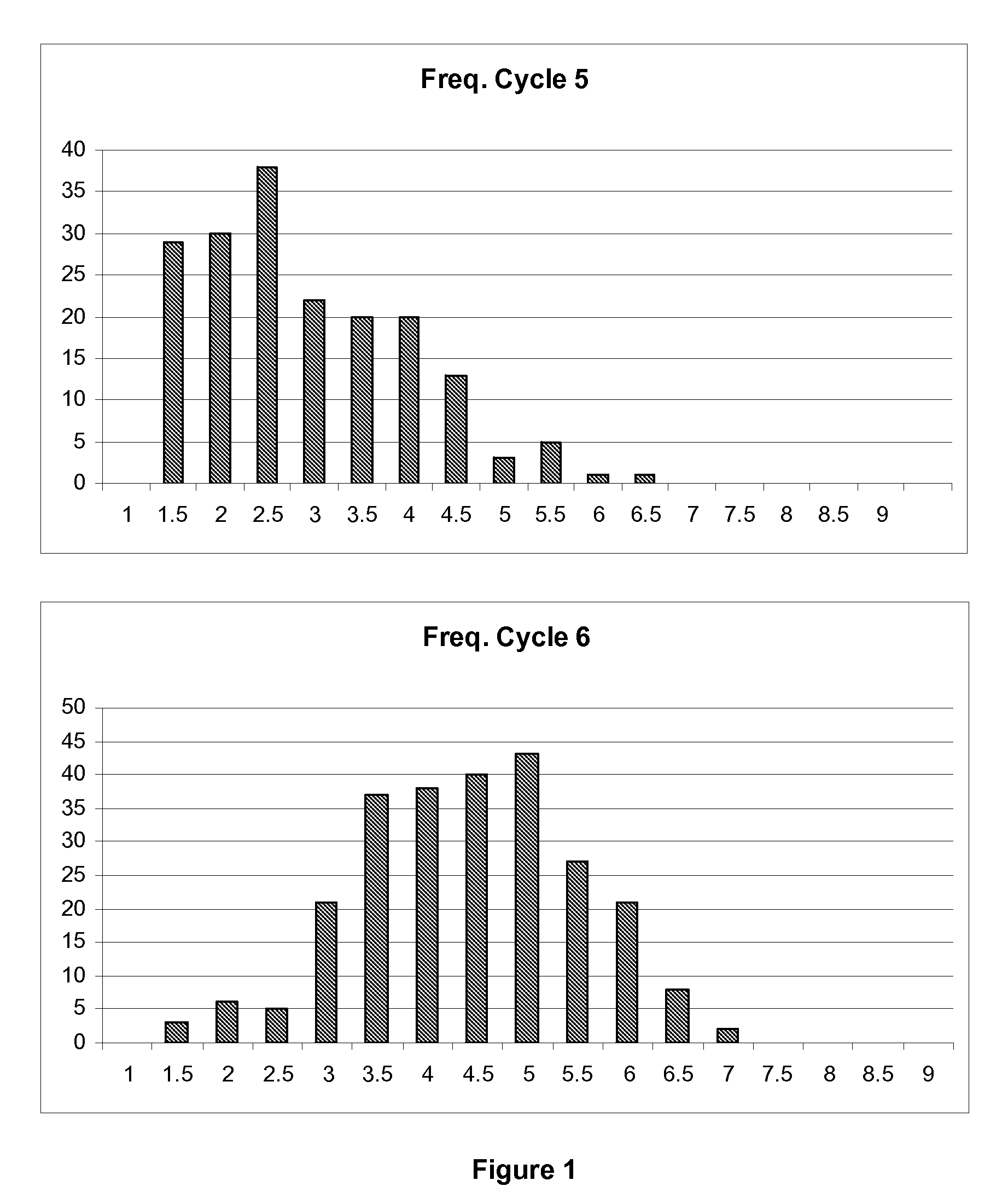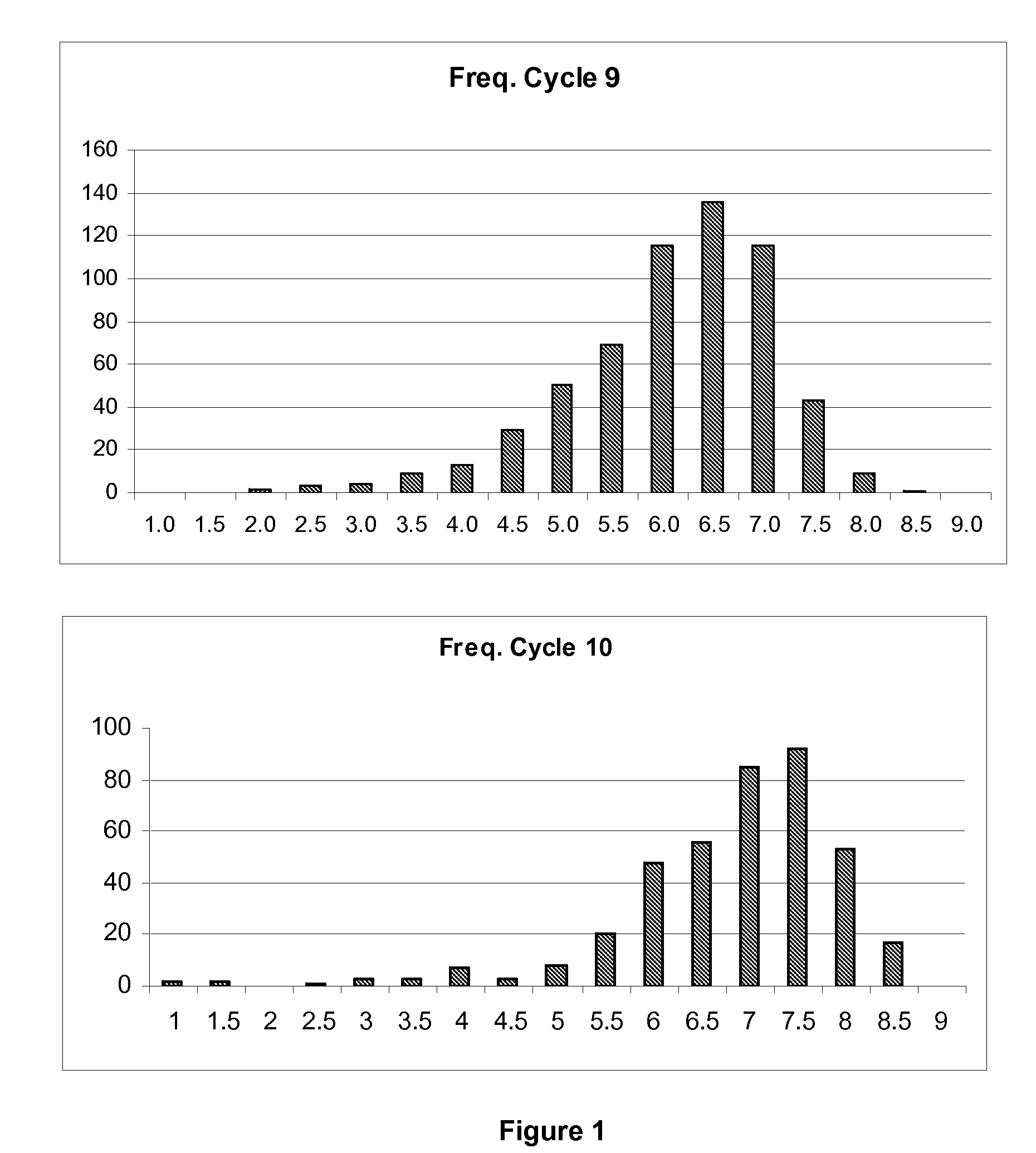Sclerotinia-resistant Brassica and methods for development of resistance to Sclerotinia
- Summary
- Abstract
- Description
- Claims
- Application Information
AI Technical Summary
Benefits of technology
Problems solved by technology
Method used
Image
Examples
Example
Example 1
Determining the Performance of Canola Checks Under Low, Moderate, High, Very High and Extreme Disease Field Research Conditions
Methods and Materials
[0125] In an effort to determine the level of Sclerotinia tolerance in currently available spring canola cultivars under low, moderate, high and very high Sclerotinia conditions, data was collected from natural field conditions over many years, including public yield plots. The data is summarized in Table 3. Data for 44A89 and 46A65 came from a five replication-natural trial in Minnesota in 2001 (Jurke and Fernando, 2003). The data for Pioneer Hi-Bred variety 46A76 is an estimate based on the reaction of similar entries in the same Minnesota trial as well as North Dakota data from 2003. The data for the performance of the canola checks under extreme disease conditions was generated in this study.
[0126] Winter canola lines Columbus and Express were included in extreme disease pressure research trials as running checks. As sh...
Example
*Extreme disease pressure is used for core research and development as described in Example 7.
**Estimate of frequency of each infection level in farmers' fields in Western Canada, North Dakota and Minnesota.
[0133]TABLE 4Measuring field performance under extreme disease pressure(research trials)DiseaseRatingincidenceSpringWinterSSDI**CategorySSDI %ChecksChecks1.0Highly susceptible≧8044A89,PantherWestar1.1-2.0Susceptible79-7046A65 = 2Columbus = 22.1-3.0Moderately susceptible69-6046A76 = 3Express = 33.1-4.059-504.1-5.0Moderately resistant49-405.1-6.039-306.1-7.0Resistant29-207.1-8.019-108.1-9.0Highly resistant9-0
*SSDI % Sclerotinia Sclerotiorum Disease Incidence %
**SSDI Sclerotinia Sclerotiorum Disease Incidence rating as adjusted for incidence and severity on checks 46A65 / 46A76 for spring canola and Express / Columbus for winter canola under extreme disease pressure (research trials).
[0134] Table 5 shows that fungicide applications reduce the effect of Sclerotinia on Brassica and ca...
Example
Example 2
Developing Resistance to Scierotinia-Population T Development
[0136] The target of the research effort was to replace fungicide treatment of canola with Sclerotinia-resistant varieties. The strategy was to use naturally available sources with partial resistance and pyramid these with disease-avoiding morphological traits through recurrent selection within a population, in order to attain a very high level of partial resistance. Once pyramided in a disease-avoiding background, resistance would be complete if it were built to sustain the maximum length of exposure to the disease, starting from petal drop to the end of flowering, and therefore would withstand the pathogen without significant damage to the plant.
[0137] Disease-avoiding morphological traits include, for example, good standability and stiff stalk (stem), later maturity, high branching, lower petal retention and rapid leaf abscission. Physiological traits are primarily strong partial stem resistance which may be...
PUM
| Property | Measurement | Unit |
|---|---|---|
| Fraction | aaaaa | aaaaa |
| Fraction | aaaaa | aaaaa |
| Diameter | aaaaa | aaaaa |
Abstract
Description
Claims
Application Information
 Login to view more
Login to view more - R&D Engineer
- R&D Manager
- IP Professional
- Industry Leading Data Capabilities
- Powerful AI technology
- Patent DNA Extraction
Browse by: Latest US Patents, China's latest patents, Technical Efficacy Thesaurus, Application Domain, Technology Topic.
© 2024 PatSnap. All rights reserved.Legal|Privacy policy|Modern Slavery Act Transparency Statement|Sitemap



